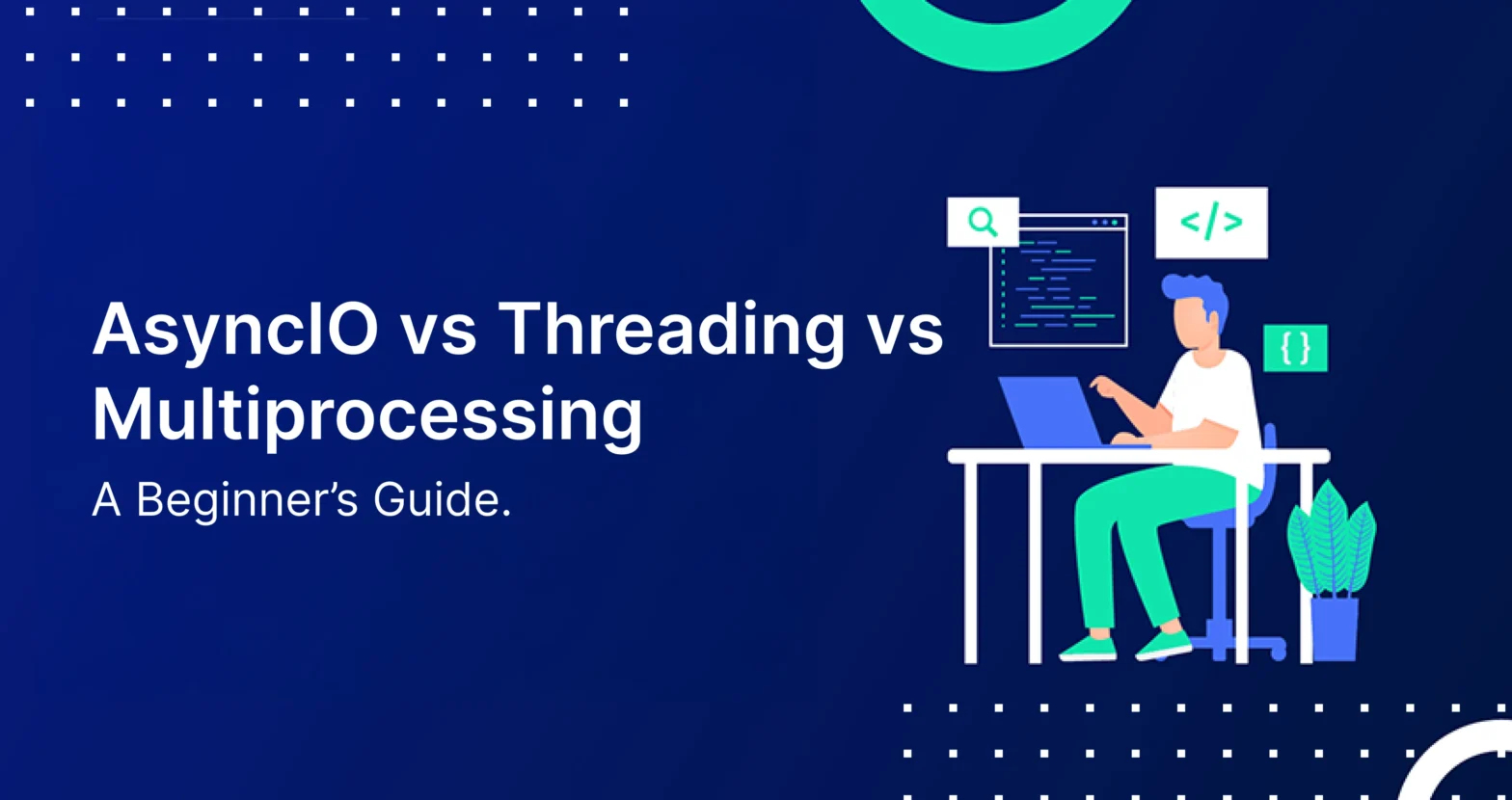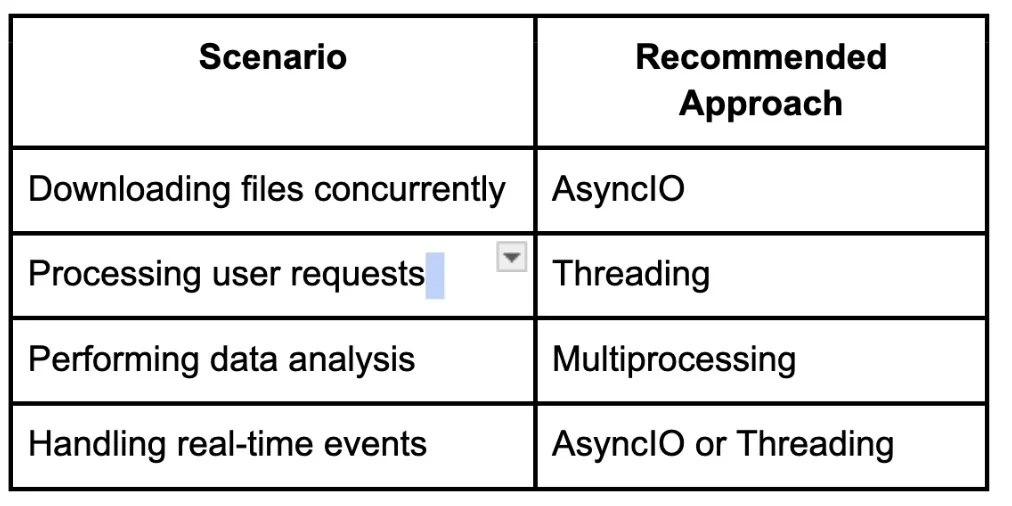AsyncIO vs Threading vs Multiprocessing: A Beginner’s Guide

In the world of Python programming, making the most of your computer’s resources is crucial. Whether you want to handle multiple tasks at once, speed up data processing, or simply make your program more efficient, the choice between Threading, AsyncIO, and Multiprocessing can feel overwhelming.
In this guide, we’ll break down these concepts step-by-step to help you understand what they are, when to use them, and how they work.
What Are Threads and Processes?

Threads
A thread is the smallest unit of execution in a program. Think of threads as workers within a single process, all sharing the same memory space and working together. This allows threads to communicate and share data quickly, but it also makes them prone to issues like race conditions (when two threads try to access or modify the same data simultaneously).
Threads are useful when your program has tasks that can run simultaneously, like downloading multiple files or handling user interactions while performing background tasks.
Processes
A process, on the other hand, is a self-contained execution environment. Each process has its own memory space, resources, and a single thread of execution by default. Since processes don’t share memory, they avoid many of the pitfalls of threads, like race conditions, but at the cost of increased memory usage and slower communication between processes.
Processes are ideal for CPU-bound tasks that require heavy computation because they can utilize multiple CPU cores.
Key Differences

AsyncIO: Lightweight Concurrency
AsyncIO is Python’s solution for handling multiple tasks concurrently using a single thread. Instead of creating new threads or processes, AsyncIO uses an event loop to switch between tasks.
It’s perfect for I/O-bound tasks like reading files, sending HTTP requests, or querying databases where the program spends time waiting for responses.
Example: AsyncIO in Action (Python)
import asyncio
async def fetch_data():
print("Fetching data...")
await asyncio.sleep(2) # Simulates an I/O operation
print("Data fetched!")
async def main():
await asyncio.gather(fetch_data(), fetch_data())
asyncio.run(main())
When to Use AsyncIO
- Use AsyncIO when tasks involve a lot of waiting (e.g., network requests).
- Avoid AsyncIO for CPU-bound tasks—it’s not designed for heavy computations.
Threading: Parallel Execution in a Shared Memory Space
Threading allows your program to run multiple tasks in parallel within a single process. It’s ideal for tasks that require simultaneous execution and don’t rely heavily on CPU.
Example: Threading in Action
import threading
import time
def print_numbers():
for i in range(5):
print(i)
time.sleep(1)
thread = threading.Thread(target=print_numbers)
thread.start()
print("Main thread continues...")
thread.join() # Wait for the thread to finishWhen to Use Threading
- Use threading for I/O-bound tasks like reading files or handling multiple user requests.
- Avoid threading for CPU-bound tasks due to Python’s Global Interpreter Lock (GIL), which limits threads to one active execution at a time in a process.
Multiprocessing: True Parallelism Across Processes
Multiprocessing creates separate processes, allowing your program to utilize multiple CPU cores for true parallelism. Since each process has its own memory, this approach is well-suited for tasks that require significant computation.
Example: Multiprocessing in Action
from multiprocessing import Process
def print_numbers():
for i in range(5):
print(i)
process = Process(target=print_numbers)
process.start()
print("Main process continues...")
process.join() # Wait for the process to finishMemory and CPU Allocation
- Each process gets its own memory space, meaning they don’t interfere with each other.
- Processes can run on different CPU cores, allowing Python to bypass the GIL and achieve true parallelism.
When to Use Multiprocessing
- Use multiprocessing for CPU-bound tasks, like large-scale computations or simulations.
- Avoid multiprocessing if tasks require frequent communication or sharing of large amounts of data—it can be slow and memory-intensive.
When to Use What?

Conclusion
Understanding the differences between Threading, AsyncIO, and Multiprocessing can help you design efficient programs tailored to your specific needs. Use AsyncIO for lightweight concurrency in I/O-bound tasks, Threading for tasks requiring shared memory and parallelism, and Multiprocessing for heavy computation across multiple CPU cores.
Each of these tools has its strengths and weaknesses, so choose wisely based on your program’s requirements. Happy coding!